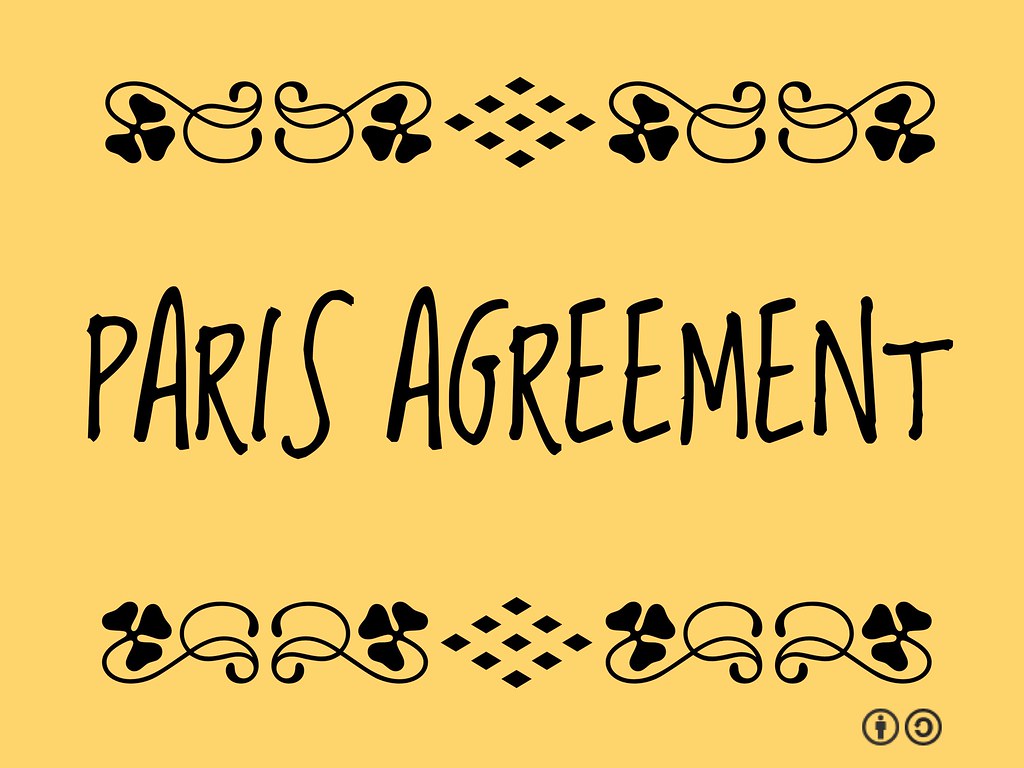Difference Between Kyoto Protocol and Paris Agreement

What is Kyoto Protocol?
The Kyoto protocol was an international agreement that was adopted in December 1997 to reduce greenhouse gas emissions. The agreement is so named because it was made during a meeting in Kyoto, Japan. The purpose of this meeting was to address the growing problem of global climate change, or global warming, as it was commonly called at the time. The Kyoto protocol was one of the first international agreements made related specifically to climate change and was considered a significant diplomatic milestone at the time.
The Kyoto protocol was prompted by warnings by scientists that greenhouse gas emissions might raise the average global temperature to dangerous levels that, in the future, could lead to the melting of permafrost and glaciers, sea level rise, an increase in the number of severe weather events, such as floods, and an increased risk of extinction for 20-30% of all plant and animal species.
The Kyoto protocol compelled 41 industrialized countries and the European Union to reduce the global emission of 6 major greenhouse gases. The greenhouse gases were carbon dioxide, methane, sulfur hexafluoride, HFCs, PFCs, and nitrous oxide. The goal was to reduce greenhouse gas emissions to 5.2% below 1990 levels by 2012. Although the treaty was made in 1997, it went into effect in February 2005.
The Kyoto protocol primarily targeted industrialized countries since they were considered to be the primary emitters of greenhouse gases. The Kyoto protocol did not apply to countries that were still considered to be developing. For this reason, China was not required to reduce its greenhouse gas emissions since it was considered a developing country, despite the fact that it emitted more greenhouse gases than any other country in the world. This fact led the Kyoto protocol to be criticized as ineffective and unfair. It was also considered ineffective because the United States, the second largest contributor to greenhouse gas emissions in the world at the time, was also not bound by the Kyoto protocol because the United States never ratified it.

What is Paris Agreement?
The Paris agreement was made in December 2015 in Paris, France with the intention of cutting the global emission of greenhouse gases. The specific goal of the Paris climate agreement was to reduce greenhouse gas emissions so that the global average temperature would not rise more than 2 degrees Celsius above pre-industrial levels with an earnest effort to not allow it to rise 1.5 degrees Celsius above pre-industrial levels. It went into effect in November 2016.
The Paris agreement grew out of a perceived need for a treaty that would require all nations to commit to reducing greenhouse gas emissions, including major emitters not bound by previous climate-related treaties. The Paris agreement required both developed and developing countries to reduce their greenhouse gas emissions. Each country was also required to submit a plan to the UN for how they intended to reduce their greenhouse gas emissions.
Most nations set targets for reducing greenhouse gas emissions by a certain percentage by a date between 2025 and 2030. The United States, for example, had already set a goal in 2014 for reducing emissions to 26-28% below 2005 levels. China planned for its greenhouse gas emissions to peak around 2030 and said it would make an honest effort to peak earlier. India also planned to cut 33-35% of its emissions stemming from its GDP by about 2030, though India also commented on the difficulty of accomplishing this while still reducing poverty in the country. A committee was also formed to annually report on the progress of the reduction of emissions and nations abiding by the agreement were asked to update their plans for emissions reduction every 5 years.
Similarities between Kyoto protocol and Paris agreement
The Paris agreement and the Kyoto protocol are both international agreements with the expressed goal of reducing global greenhouse gas emissions.
Differences between Kyoto protocol and Paris agreement
Although there are similarities between these two international agreements there are also important differences.
- The Kyoto protocol focuses on reducing emissions of greenhouse gases to 5.2% below pre-1990 levels, whereas the Paris agreement focuses on stopping the global average temperature from rising more than 2 degrees Celsius above pre-industrial levels.
- The Kyoto protocol only applied to developed countries, whereas the Paris agreement requires all countries, including developing countries, to reduce greenhouse gas emissions.
- The Kyoto protocol focuses on cutting the emission of six specific greenhouse gases, whereas the Paris agreement focuses on anthropogenic greenhouse gases in general.
- The Kyoto protocol’s initial phase ended in 2012, while the Paris agreement timeline varies, although most countries plan to accomplish their target goals by 2025-2030.
Kyoto protocol vs. Paris agreement

Summary
The Kyoto protocol was an international agreement made in 1997 which required industrialized nations to reduce greenhouse gas emissions to prevent catastrophic global warming. The six greenhouse gases that were made the primary focus were carbon dioxide, nitrous oxide, methane, HFCs, PFCs, and sulfur hexafluoride. The Kyoto protocol intended to reduce greenhouse gas emissions to 5.2% below 1990 levels. The requirements of the agreement did not apply to developing nations, and certain industrial nations, such as the United States, never ratified it. The Paris agreement was an international agreement made in 2015. It required all countries, including developing countries, to form plans to reduce national greenhouse gas emissions to prevent the global average temperature from rising more than 2 degrees Celsius above pre-industrial levels. It also formed a committee to report annually on the progress of emissions reduction. The two treaties are similar in that they were both international agreements to address climate change. They differ in that the Kyoto protocol applied only to industrialized or developed nations, while the Paris agreement was also binding for developing nations. Also, the Kyoto protocol focused on reducing the emissions of specific gases, whereas the Paris agreement focuses on preventing global average temperature rise due to greenhouse gas emissions and does not target specific greenhouse gases. The first phase of the Kyoto protocol was also to be completed by 2012, whereas the Paris agreement timeline varies with most nations intending to accomplish their target goals by 2025-2030.
- Difference Between Environmental Performance Index and Development - November 24, 2023
- Difference Between Environmental Intervention and Development - November 8, 2023
- Difference Between Eco Efficiency and Eco Effectiveness - September 18, 2023
Search DifferenceBetween.net :
1 Comment
Leave a Response
References :
[0]Focus, Climate. "The Paris agreement summary." Client brief on the Paris Agreement 28 (2015) https://climatefocus.com/sites/default/files/20151228%20COP%2021%20briefing%20FIN.pdf
[1]Focus, Climate. "The Paris agreement summary." Client brief on the Paris Agreement 28 (2015) https://climatefocus.com/sites/default/files/20151228%20COP%2021%20briefing%20FIN.pdf
[2]The Editors of Encyclopaedia Britannica. “Kyoto Protocol.” Encyclopaedia Britannica, Encyclopaedia Britannica, inc., 7 Feb. 2020, https://www.britannica.com/event/Kyoto-Protocol.
[3]The Editors of Encyclopaedia Britannica. “Paris Agreement.” Encyclopaedia Britannica, Encyclopaedia Britannica, inc., 16 Dec. 2019, https://www.britannica.com/topic/Paris-Agreement-2015.
[4]The Kyoto Protocol. The Kyoto Protocol, N.D., https://www.kyotoprotocol.com/. Accessed 19 May 2020.
[5]Image credit: https://live.staticflickr.com/2929/34035246275_de9c9481df_b.jpg
[6]Image credit: https://commons.wikimedia.org/wiki/File:Kyoto_Protocol_at_Multimedia_University_(Cyberjaya).jpg

The(Z) when once applied shall address the worlds climate dilemma by significantly reducing each nations carbon footprint and saving money at the gas pump… gas or diesel